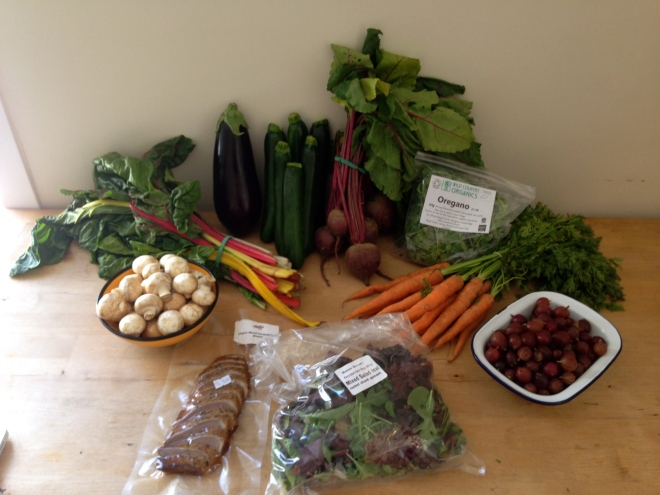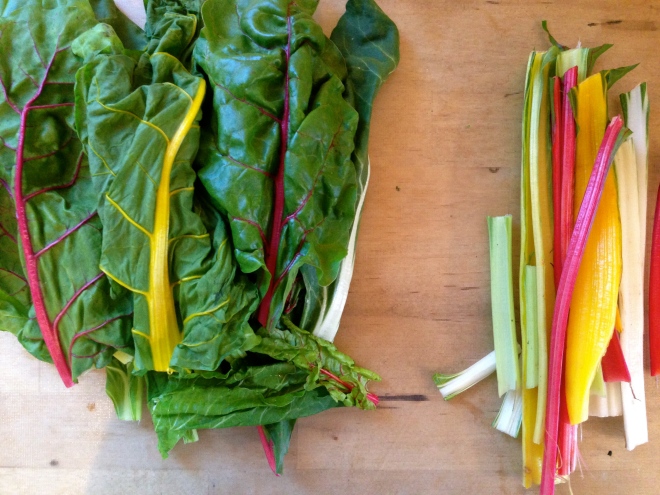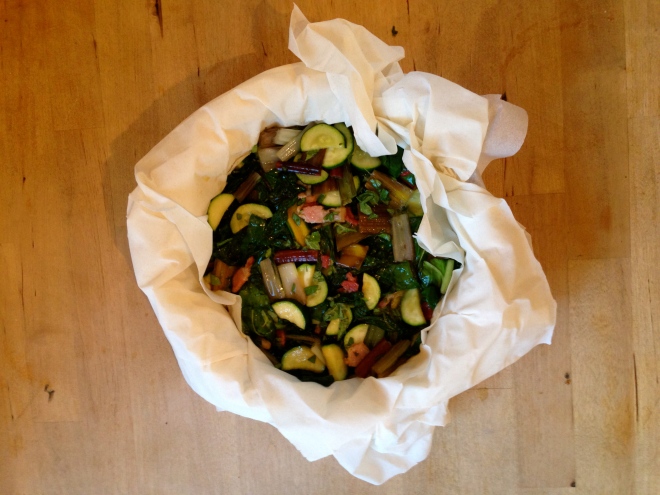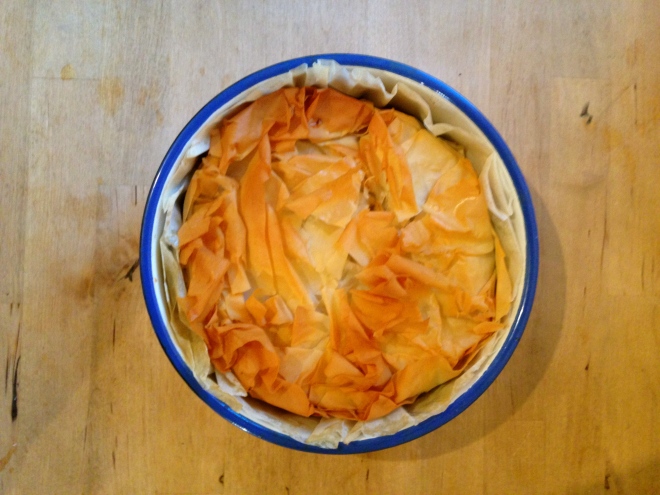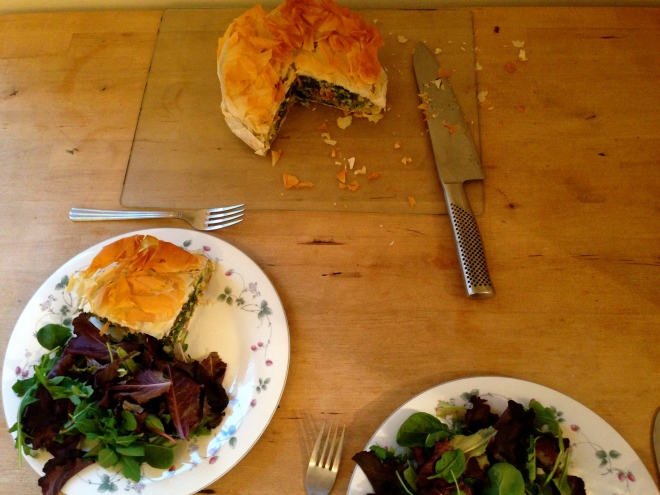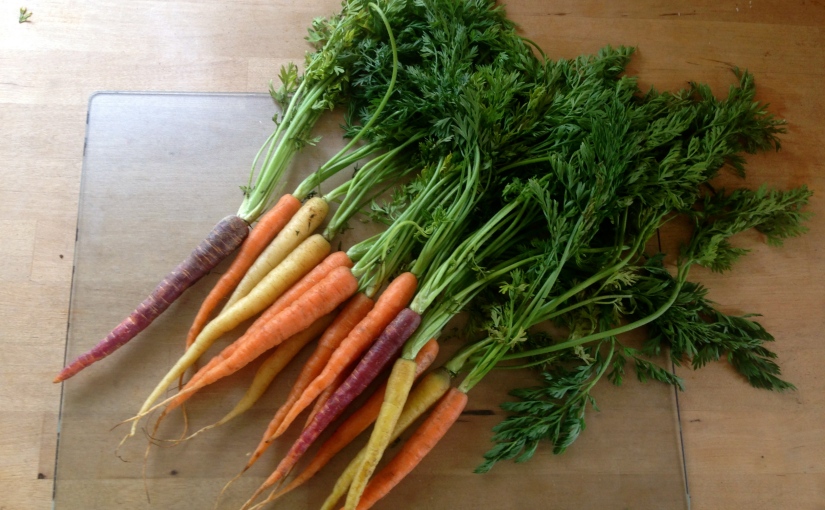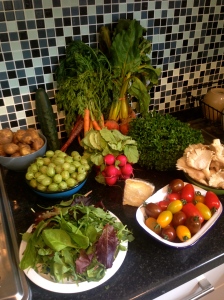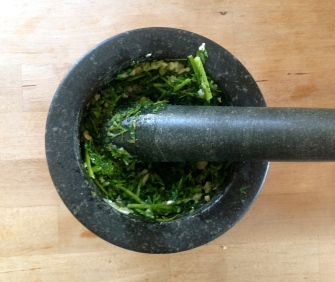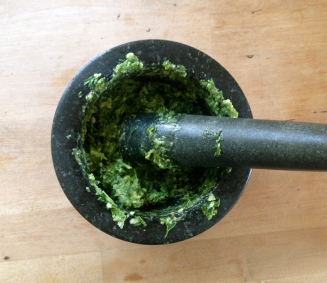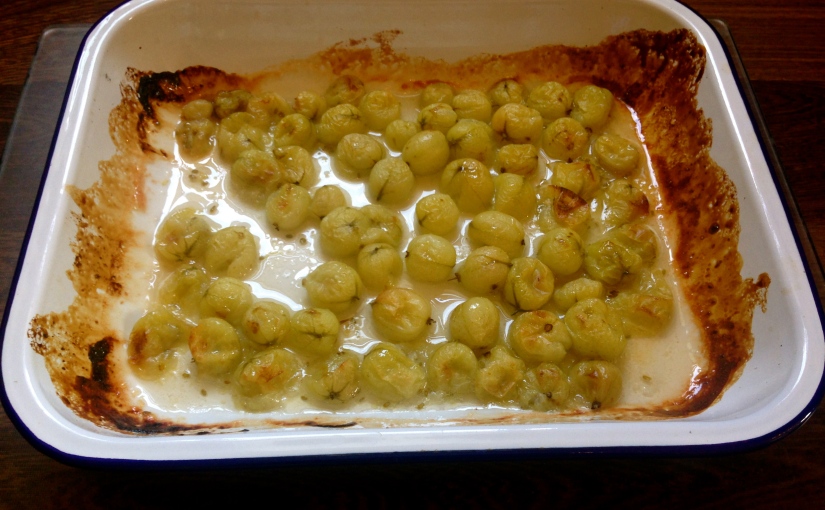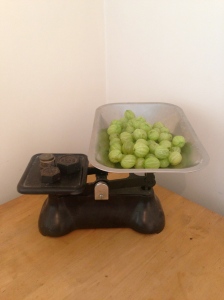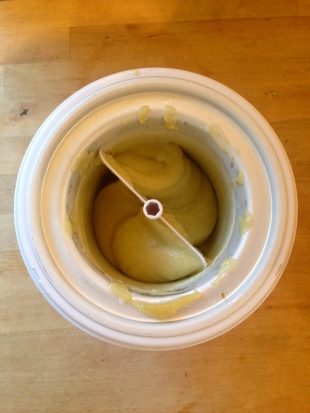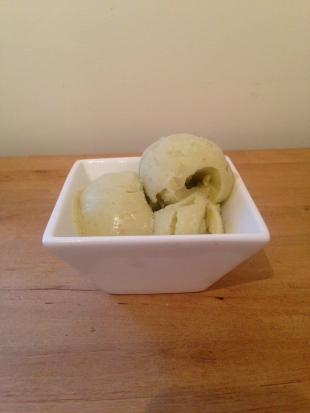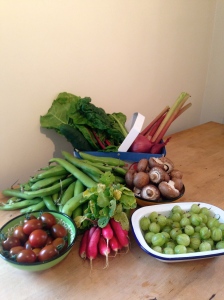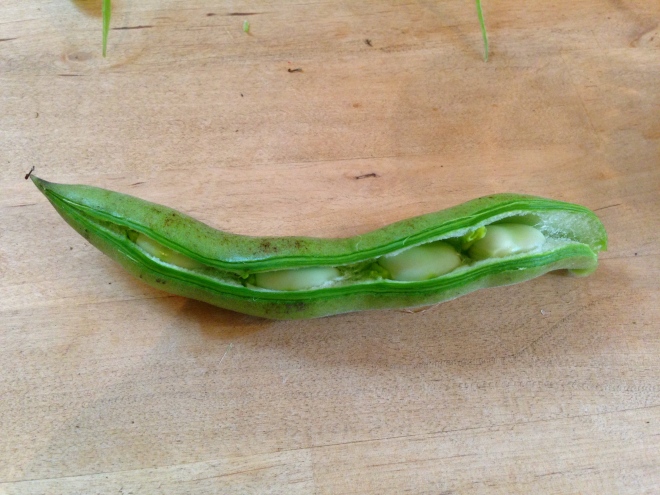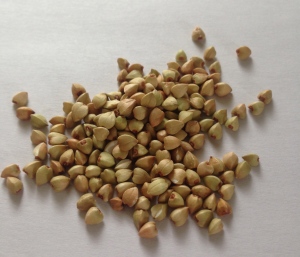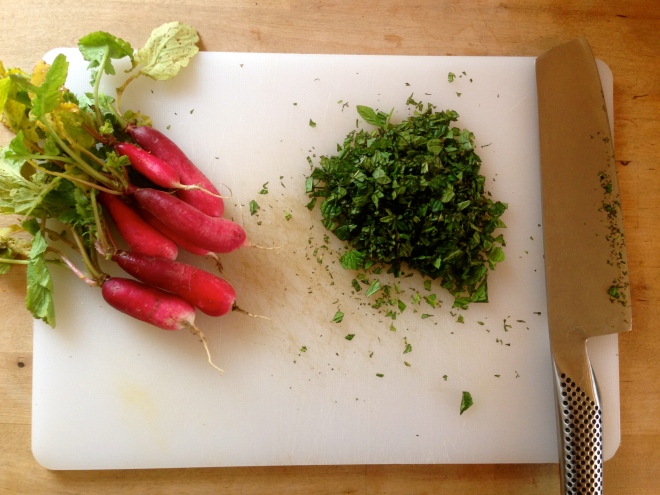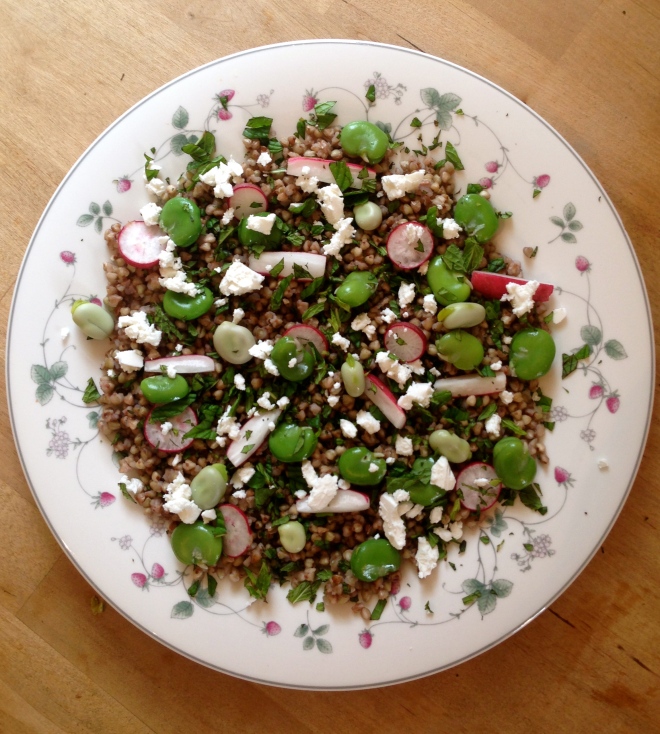When we move out of our London flat and into a place with an actual garden one of the first things I want to grow is Chard, particularly the varieties with colourful, rainbow stems. It is so useful in summer and autumn when it is at its best and replaces the heavy wintergreens in our kitchen. It is one of the first things that gets used up each week from the market because I can add it to almost every meal.
This week at the market I spent almost all of the £25 I allow myself to take with me each week, although the fruit and veg came to less than £20 having splashed out on a smoked duck breast (which was delicious). I managed to find some of the red gooseberries (which can be eaten raw) I mentioned a few weeks ago which were delicious on there own on the walk home as well as in the gooseberry cake Joel made.
Back to the Chard, some places I have read suggest treating the stalks and leaves as separate vegetables, which I find strange. Yes the stalks need a little longer to cook but just add then to the pan/pot/steamer a couple of minutes before the leaves – let them stay together!
I think of chard somewhere in between spinach and kale in how I use it, the leaves keep their form better than spinach but are not as sturdy as kale. My favourite way to cook chard is to wilt it in a pan with a smidge of butter; in the same way you would spinach. Just add the stalks first and allow to soften for a few minutes before adding the leaves.
Chard also has a real affinity to bacon, particularly smoky bacon. For someone like me who eats very little meat it is unusual to say, but almost all of my suggestions for chard would be improved with the addition of some smoky bacon.
Chard, Feta and Bacon Filo Pie – Serves 4
Makes an excellent tea for two with enough left overs for a workday lunch.
- 1 pack of filo pastry (because no one has that much patience with a rolling pin)
- Small bunch of Chard – around 10-15 stalks
- 3 rashes of streaky smoky bacon – diced
- 1 small courgette – thinly sliced
- 6 free range eggs
- 2 tbsp chopped oregano
- 150g of feta – cubed
Preheat your oven to 180 degrees.
Separate your chard leaves from their stalks, chop the stalks into 1cm pieces and roughly shop the leaves.
Heat a large frying pan and add your bacon and cook until turning slightly golden, add your chard stalks, allow to cook for 2 minutes before adding the leaves and courgette to the pan. Allow everything to cook until the leaves have wilted, 3-4 mins. Then remove from the heat and allow to cool.
Whilst the vegetables are cooling, line a tin with baking paper and then line with filo pastry, one sheet at a time with the sheets over hanging the tin by around 2inchs until you have a leak proof pie case (I use around 8 sheets).
Whisk the eggs in a large bowl and add the cooled vegetable mixture, feta as well as the oregano and a pinch of salt and pepper. Pour the mixture into your filo lining.
Fold the over hanging filo on top of the mixture adding extra strips of filo to the top until the mixture is completely covered and the pie has a somewhat scruffy crown of pastry.
Bake the pie in the oven for 40-50 minutes, until the top is golden and the mixture set firm
Other Suggestions for Chard
- Try pan frying with gnocchi and the addition of smoky bacon – a great mid week tea.
- Simply steamed with a little lemon juice (or Sumac if you have it), salt and pepper as a side. Adding in fresh peas as well makes this even better.
- Added to stir fries.
- Added to salads once lightly steamed and cooled.
- Pan fried on top of a really good piece of toast with a poached egg hat.
- Pan fired with softened onions, garlic and cannellini beans makes an excellent and healthy beans on toast.

